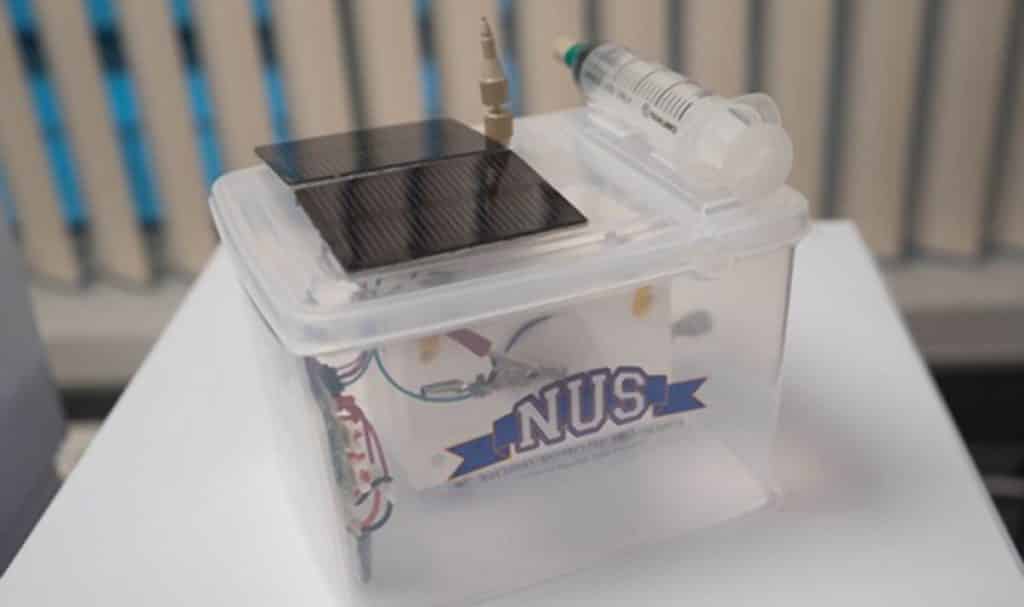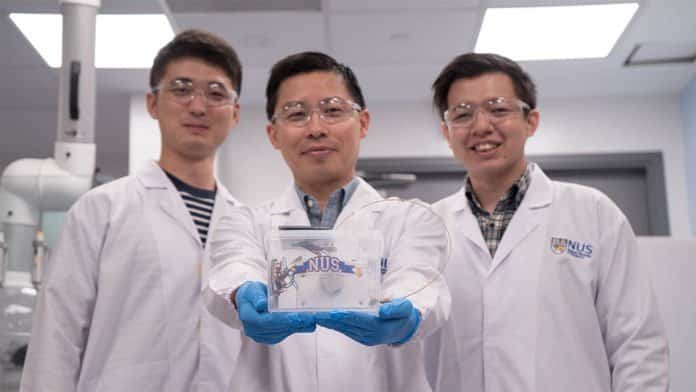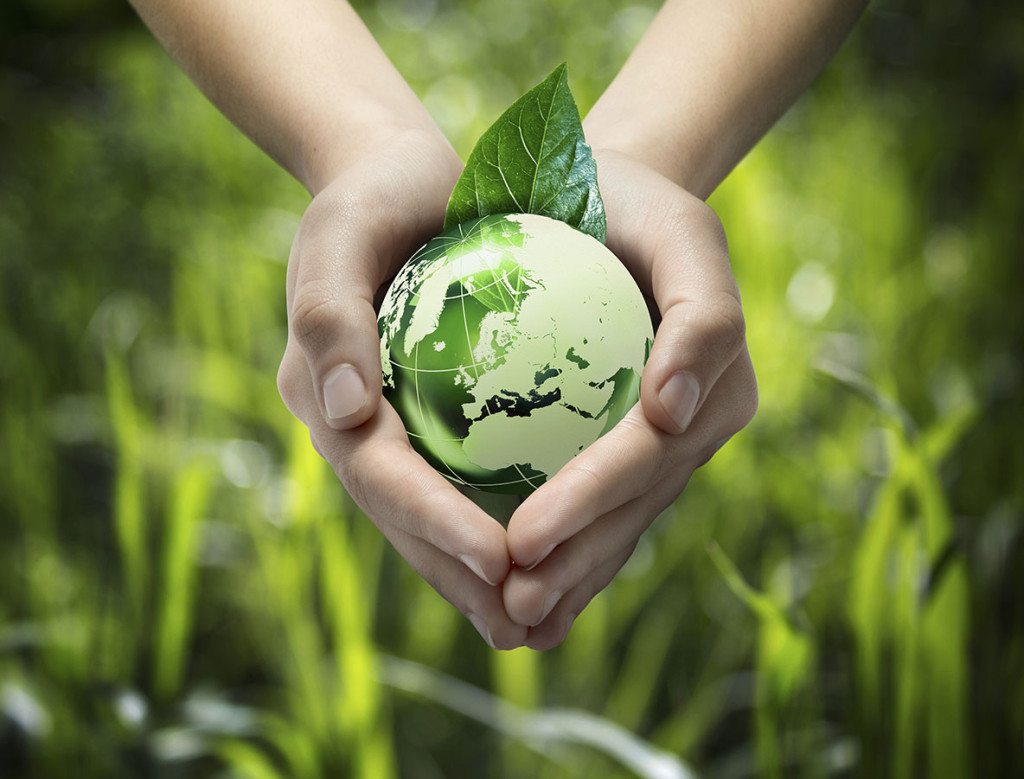Photosynthesis Mimicking Device Could Pave Way for Greener Plastics
Ethylene, which is the building block of polyethylene, is an important chemical feedstock produced in large quantities for manufacturing plastics, rubber and fibres. Over 170 million tonnes of ethylene was produced worldwide in 2015, and the global demand is expected to exceed 220 million tonnes by 2020.
Current industrial production of ethylene employs steam cracking of fossil fuels at between 750°C to 950°C. The current method also emits about two tonnes of carbon dioxide for every tonne of ethylene produced.
Recognising the need for a more eco-friendly method, a team of scientists from the National University of Singapore (NUS) has developed a prototype device that mimics natural photosynthesis to produce ethylene gas using only sunlight, water, and carbon dioxide.

An artificial photosynthesis device developed by a team of scientists from the National University of Singapore (NUS) could provide a greener alternative to current ethylene production, employing a completely renewable energy source, while simultaneously converting CO2 with the help of copper catalysts.
The team first designed a copper catalyst in 2015 that could generate ethylene from readily available water and carbon dioxide when
powered by electricity. The researchers later introduced this copper catalyst into an artificial photosynthesis system to convert carbon dioxide and water into ethylene using only solar energy.
The process, developed by the NUS team, takes place at room temperature and pressure, with only the use of benign chemical reagents. The researchers have also added a battery to store excess solar energy, thus ensuring stable and continuous production of ethylene, and are now developing suitable catalysts that can be used in similar systems to produce liquid fuels such as ethanol from CO2 and H2O.
The model gadget intended to do the response accomplished a 30 for every penny faradaic effectiveness of ethylene in view of the measure of electrons produced from sun based vitality. The general vitality effectiveness of sunlight based to-ethylene is additionally tantamount to the level of vitality productivity of regular photosynthesis by plants.
Assistant Professor Jason Yeo Boon Siang said, “Carbon capture is a key step in fighting human-driven climate change. There has been a steady increase in the atmospheric concentration of carbon dioxide because the rate of carbon dioxide emissions exceeds that of carbon capture.”
“This is attributed as a major cause of global warming which leads to undesirable environmental changes. Our device not only employs a completely renewable energy source but also converts carbon dioxide, a greenhouse gas into something useful. This could potentially close the carbon cycle.”
“We believe that our work, which is a product of efforts for the last two years, will play a crucial role to address key challenges in the realization of a scalable artificial photosynthesis system to produce clean fuels sustainably,” said Siang.






























